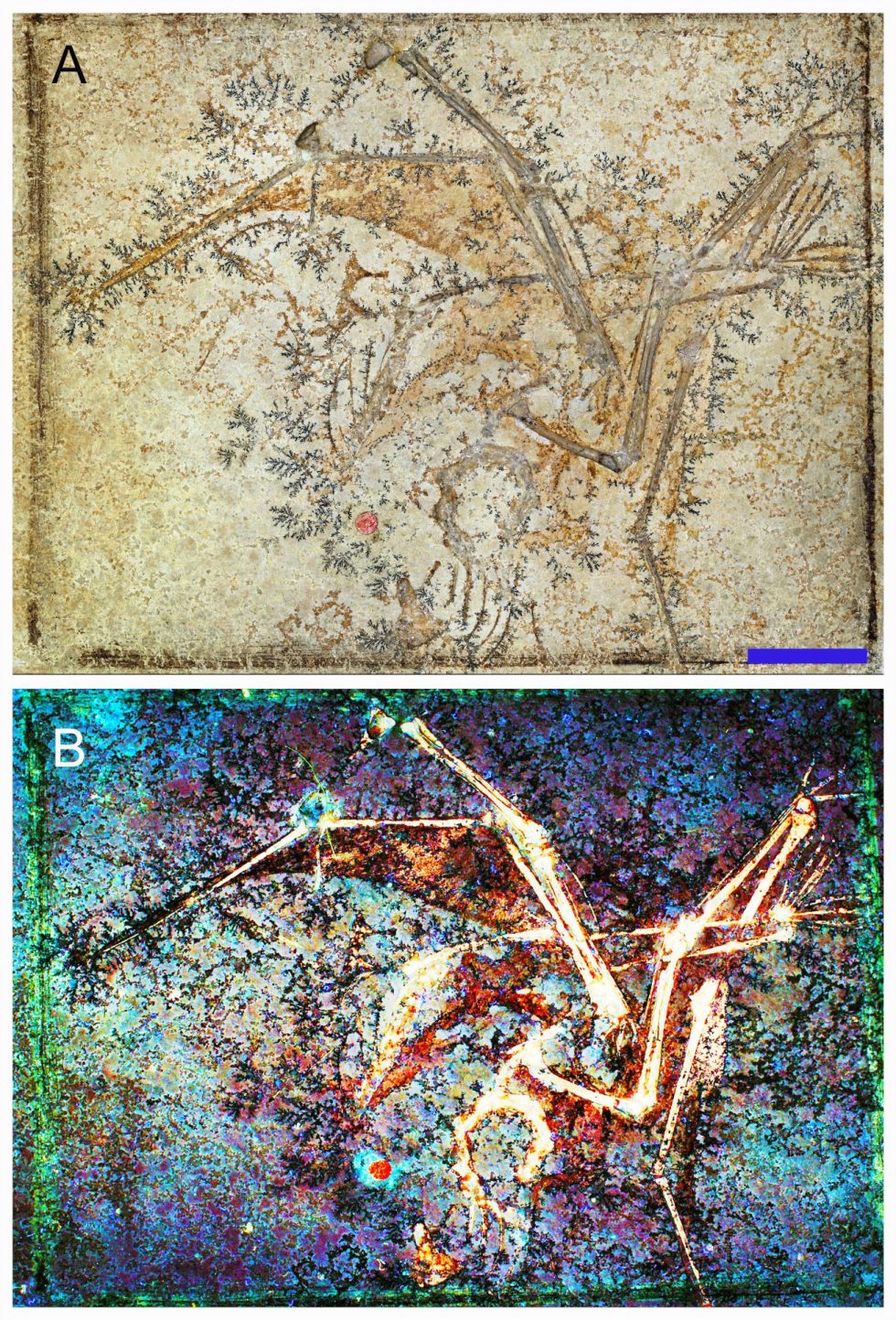
A group of researchers has recently made an astounding discovery.
Using an innovative imaging technique, an international team of scientists has uncovered remarkable details of a pterosaur's soft tissue. Despite an age of approximately 145–163 million years, the wing membrane and the webbing between both feet managed to survive fossilization.
Armed with new data, the team used modeling to determine that this little pterosaur had the capacity to launch itself from the water. Their findings are published in Scientific Reports.
Fine details
Pterosaurs—an extinct type of winged reptile—were the first known vertebrates to take to the air and fly. Their sizes ranged from the very tiny (a wingspan of 25 centimeters) to the absolutely enormous (a breathtaking 10- to 11-meter wingspan). According to the lead researcher on the new work, Dr. Michael Pittman, the small aurorazhdarchid that was studied could have fit in the palm of your hand. Of 12 well-preserved pterosaurs from the Solnhofen Lagoon in Germany, it was the only one with preserved soft tissues.
Dr. Pittman is a paleobiologist and assistant professor at the Chinese University of Hong Kong, and co-author Dr. Thomas G. Kaye is with the Foundation for Scientific Advancement. The authors noted that this pterosaur is now among only six known pterosaurs with evidence of webbed feet and approximately 30 with wing membranes.
"We are constantly amazed by just how stunning the preserved details can be," Dr. Pittman told Ars, "which keeps getting better and better as we refine the technique more and more."
The ability to detect these soft tissues and bring them into sharp relief through laser-stimulated fluorescence (LSF) is relatively new. LSF is a non-destructive imaging technique that has been taken to new levels by Dr. Pittman and Dr. Kaye.
"As part of a larger, ongoing project," Dr. Pittman said, "we have been using LSF to reveal otherwise hidden soft tissues preserved in fossils. A key focus has been to use LSF to study feathered dinosaurs and pterosaurs to better understand their biology and flight evolution."
Ready for takeoff?
In this case, understanding the pterosaur's biology involved determining whether this Late Jurassic creature could take off from the water. Just because the pterosaur had webbed feet, the researchers emphasized, doesn’t necessarily mean it spent time in the water, nor does it indicate that it could get out of the water if it happened to fall in.
The work was incredibly difficult and potentially contentious. It's one thing to try to determine locomotion in animals that have skeletons mirroring those that exist today; it’s an entirely different matter when that creature has no modern analogue.
"There’s a ton of debate about pterosaurs generally, about pretty much every aspect of their biology," Dr. Armita Manafzadeh told Ars. "And their joints are extra debated because they're just very bizarre."

Dr. Manafzadeh, who was not involved in this research, is a Donnelley Postdoctoral Fellow and NSF Postdoctoral Research Fellow at the Yale Institute for Biospheric Studies. Her work focuses on what’s called "arthrology": understanding joints, joint function, and movement in both extant and extinct species.
Figuring out the movement of extinct animals, she said, requires determining "what you think the animal was capable of, and that has its own challenges."
"But you also have to figure out, out of this range of capabilities, what did the animal actually do when it was alive," she said. "It might have been able to do it, but that doesn’t necessarily mean that it did it."
The team looked to Dr. Michael Habib, a self-described pterosaur aeromechanics specialist and one of only four people on the planet with that expertise, to help them analyze how these soft tissues could have impacted the reptile’s ability to fly and launch. Dr. Habib has studied birds and pterosaurs for years, and his unique knowledge base of physics, aerodynamics, and paleontology made his insights particularly relevant. The launch model used in this paper was an expansion of work Dr. Habib and his colleague did in 2010 to help determine whether large pterosaurs would have been able to launch from the water. He is a research associate with the National History Museum of Los Angeles and adjunct associate professor of Medicine at UCLA.
"I work on animal biomechanics and flight origins," Dr. Pittman said, "but I invited Dr. Mike Habib on the project because of his specific expertise on the flight of pterosaurs, which enabled the team to deliver the results we found."
reader comments
86